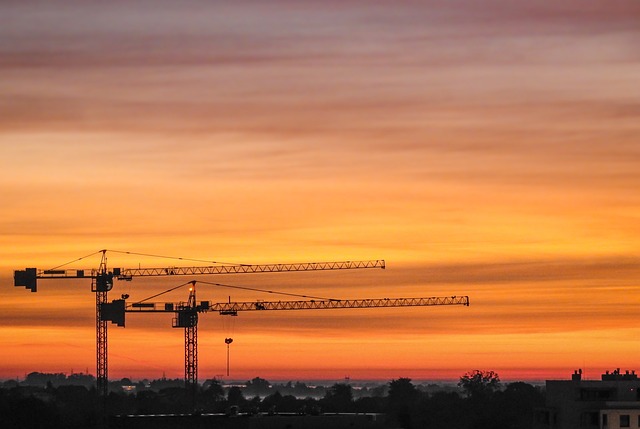The Duty to Proceed: With the rise of mega-projects, the duty to proceed poses increased risks for contractors and sureties.
Contractors, subcontractors, owners, and sureties are generally familiar with the duty to proceed—the duty of a contractor or subcontractor to continue performing work during the pendency of disputes over work and/or claims. The duty is entrenched in standard industry contracts and established in law. Due to the rise of mega-projects and the increased use of project delivery models other than the traditional design-bid-build approach, it may, however, be time for construction professionals to reexamine and reconsider the duty and its accompanying risks on such high-stakes projects. This article identifies the increased risks faced by contractors and sureties arising from the duty to proceed on mega-projects and discusses potential ways to mitigate these risks.
The Duty to Proceed and the Contractual Right to Stop Work
The duty to proceed is present in many, if not most, construction contracts and subcontracts. ConsensusDocs 200-3 (Standard Agreement and General Conditions Between Owner and Constructor—Lump Sum) requires a contractor to “continue the Work and maintain the Schedule of work during any dispute.†AIA201-2017 similarly requires the contractor to “proceed diligently with performance of the Contract†pending resolution of a claim. Federal government contractors are undoubtedly familiar with Federal Acquisition Regulation (FAR) 52-233-1, which requires the contractor to “proceed diligently with performance of the contract, pending final resolution†of a claim. It is equally well known that there are very few common contractual exceptions (for example, an owner’s failure to make payment, a formal suspension or stop work order, or safety emergencies) to a contractor’s duty to proceed.
A duty to proceed clause is intended to ensure that the project does not come to a standstill while the parties are attempting to resolve their differences. The practical effect of a duty to proceed, however, is that a contractor or subcontractor may end up carrying the costs of disputed extra work and changes throughout the project’s duration. If the dispute proceeds to litigation or arbitration, contractors and subcontractors may not realize any recovery until years after project completion. For a small contract, where the disputed amount is relatively marginal, the requirement to proceed with work may not impose a monumental financial burden. But on a $2 billion federal government contract or a $250 million solar panel project, where the amount in dispute would likely be in the hundreds of millions of dollars, the decision about whether to proceed may be existential to the business.
The Changing Landscape of Project Delivery Models and the Rise of Mega-Projects
The construction industry has experienced a significant increase in large and/or mega-projects (such as infrastructure, industrial, and alternate power projects with more than $1 billion in capital expenditures). Mega-projects were only 3% of total construction projects that broke ground in 2013, but that figure grew to 33% by 2018. Researchers have estimated that the total cost for mega-projects in the U.S., in terms of “Construction Put in Place,†will grow from $50 billion in 2019 to $350 billion by 2029.
The construction industry has also seen a shift away from the traditional design-bid-build project delivery model and towards project delivery models shifting additional risks to contractors, such as: (i) design-build; (ii) design-build-finance; (iii) design-build-finance-operate-maintain; (iv) engineer, procure, and construct (EPC); and, (v) public-private partnerships (P3).
The combination of these two trends—more risk for contractors on projects with larger financial stakes—has resulted in the contractual duty to proceed taking on increased significance and importance for contractors and sureties.
The Increased Risks of the Duty to Proceed on Large and Mega-Projects
The duty to proceed poses the same risks on large and mega-projects as it does on any other construction project, but the magnitude and consequences of those risks on mega-projects are much greater. In many instances, contractors are faced with “bet-the-company†stakes if they end up having to shoulder financial responsibility for millions, or hundreds of millions, of dollars in disputed changes and extra work during project performance all the way through project completion.
The risk inherent in “bet-the-company†stakes is obvious for the contractor, but sureties should also be concerned about this increased risk posed by the duty to proceed on large projects. First, disputed changed and/or extra work in the magnitude of hundreds of millions of dollars increases the chances that a contractor cannot finish the project and that its surety will be called on to complete the project. Second, if a contractor defaults, traditional means of surety protection, such as collateralization, may not be sufficient to cover the risk faced by sureties.
For instance, in many cases, a surety or several co-sureties have guaranteed a contractor’s performance not only on one, but also on several large projects. If a contractor is faced with disputed changed/extra work such that a contractor default occurs on one project, it is possible, if not likely, that the contractor will default on other bonded projects as well. Similarly, if a surety or several co-sureties have guaranteed performance on more than one project and that contractor defaults on one project, a collateral call on one project could inhibit the contractor’s ability to complete performance on another project.
Mitigating the Risks of the Duty to Proceed
As the risk profile associated with the duty to proceed evolves, so too must contractors and sureties attempt to mitigate this risk. Several steps can be taken by contractors and subcontractors to address the increasing risk posed by the duty to proceed. Sureties should ensure their principal contractors and subcontractors are taking these steps to decrease the chances of the surety being called upon to complete performance.
Negotiate Contracts and Subcontracts That Share the Risks of Change Orders and Extra Work. This can be accomplished through contractual provisions that provide for: (i) payment for all undisputed amounts for change orders/extra work; (ii) the owner and contractor share the costs of disputed change orders/extra work during the performance of the project; and/or (iii) meaningful interest penalties for directed but unpaid change orders or extra work.
Negotiate Fair Suspension and Stop Work Provisions. Standard construction industry contracts contain suspension and/or stop work provisions for an owner’s convenience and/or for certain safety concerns. These standard provisions, however, do not typically address the risk of costs associated with disputed change orders and extra work. The parties should consider setting a threshold value of changes and/or durations of delays that would be considered outside of the parties’ original expectations, above which further performance would be excused, unless a contract modification were issued.
Provide for Quick and Efficient Dispute Resolution. Instead of complicated, lengthy, and/or non-binding dispute resolution procedures, the parties should adopt dispute resolution provisions that provide quick and meaningful relief, such as: (i) dispute resolution boards (DRBs) with the ability to make binding decisions on disputes below an agreed upon threshold; and (ii) procedures that permit the parties to pursue relief, such as declaratory relief, while the project is ongoing.
Understand Applicable Law. This may seem like an obvious consideration; however, with the rise of mega-projects, the construction industry has seen an increased utilization of joint venture entities to perform such projects. Many states have not kept up with this trend and have not developed law specific to joint ventures and, instead, treat joint ventures the same as general partnerships. Additionally, state law varies greatly regarding key substantive issues, such as requirements for and limitations on the ability to pursue claims and recover against state entities; what constitutes a differing site condition; an owner’s responsibility to provide a constructable design; an owner’s ability to disclaim liability for information provided to contractors; and how strictly contractual notice provisions are enforced. How these issues are addressed under applicable law can impact the risk associated with the duty to proceed.
While these suggested mitigation measures may not yet be standard in the industry, the risks, stakes, and consequences associated with the duty to proceed on mega-projects demand a new paradigm for risk shifting and sharing.
*This article was originally published by the National Association of Surety Bond Producers (NASBP) in Surety Bond Quarterly, Summer 2024.
Authors:






